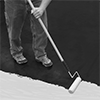Filter by
Color
Container Type
For Use On
Appearance
Container Net Weight
Primer Required for Use On
Solution Type
Overall Dry Time
Formulation
Touch Dry Time
Mark Life
Container Size
Maximum Temperature
For Topcoat Composition
DFARS Specialty Metals
Facility and Grounds Maintenance
Fastening and Joining
Electrical
Fabricating and Machining
Raw Materials











































